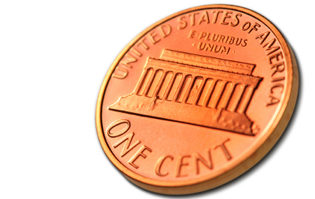Numerous Issues Have Emerged That Could Block The Progress or Threaten the Ultimate Success of Ibiquity’s Proposals
While wandering the halls at NAB2002, it became apparent that some of the recent columns in this space have struck a nerve – or several.
It seemed that everyone who had an issue or complaint about the proposed Ibiquity technology for AM or FM IBOC digital radio sought me out to bare his or her soul. Although much of the discussion centered on items covered here and elsewhere, several issues were raised.
For fear of the perceived Ibiquity juggernaut and possible negative effects on their businesses, most of the commenters requested their identities withheld for publication – a fact I lament, but understand.
Test questions
Primary among their comments were concerns about the reliability of tests performed on the Ibiquity systems to date. It is important to note that the recent NRSC pronouncements on Ibiquity’s formats are based exclusively on tests performed by Ibiquity itself, or by laboratories that were hired by Ibiquity.
The NRSC did not perform or obtain any independent testing, and there are some familiar with the technical standards process who felt that even the NRSC’s review of those tests was rather cursory and unscrupulous, particularly for the FM format.
Further, most of the testing that Ibiquity outsourced was performed by the Advanced Television Test Center, which some technical experts consider to be a second-tier facility at best. One engineer who observed the ATTC’s work called some of its results on Ibiquity’s FM IBOC system “unreproducible,” and characterized the lab’s methods as surprisingly unscientific.
Consider that this is the same lab that gave high marks to the 8-VSB modulation scheme ultimately adopted by the ATSC digital television standard, which has subsequently been the source of much controversy due to poor reception performance.
In general, these observers summarized that the test data analyzed by the NRSC was not closely indicative of what the real-world results will be if IBOC is ever widely deployed throughout a fully occupied major market’s FM spectrum. Specifically they voiced concern that far more interference than has been predicted might occur, to the extent that broadcasters might be motivated to shut down their IBOC services fairly soon after initiating it.
Under wraps
It is also becoming obvious that Ibiquity has maintained very tight control over all the testing performed on its systems. For example, the International Association of Audio Information Services – the trade association representing radio reading services for the visually impaired, most of which use FM subcarriers to distribute their programming – apparently tried to obtain an FM IBOC exciter from Ibiquity to do some of its own testing and was unable to do so.
Another report from an informed source recounted that Ibiquity had earlier approached a branch of the National Institute of Standards and Technology to test the IBOC systems, but NIST declined when Ibiquity insisted on specifying which tests would be administered. So Ibiquity moved to seek a lab for hire, where its desired level of control over testing could be exercised, eventually settling on ATTC.
In addition, potential implementers wishing to examine or learn about the format are thwarted by the fact that, to date, no published specification for any Ibiquity’s technology exists. This calls into question the announcements of support for the formats already made by a few manufacturers.
Unresolved issues
Most of the attention to date over Ibiquity’s occupied spectrum for FM IBOC has been directed to Part 73 of the FCC Rules, where the well-known Spurious Emission Mask is defined.
Ibiquity has clearly and apparently accurately stated that its FM system remains within the constraints of this mask. But those intimately familiar with the nuances of regulatory matters have pointed out that the format nevertheless violates the requisite emission designator 240F3, which states that a bandwidth of 240 kHz around the channel’s center frequency will contain 99.0 percent of the channel’s transmitted power.
Because an FM IBOC channel would no longer follow this rule, it implies that the format officially involves occupation of adjacent-channel spectrum. Such parameters are defined in Part 2 of the FCC Rules, which is an area that involves treaty negotiations, and therefore requires congressional (not just FCC) approval to amend. To the best of our knowledge, no such action has been initiated.
Moreover, these matters will require international coordination, at least with Mexico and Canada – also activities that apparently have not yet begun.
These important elements would have to be in place before IBOC FM service launched. Naturally, such negotiations and approvals can take considerable time, which puts in doubt any claim that widespread IBOC FM service could begin imminently.
Much ado
Finally, there is a growing buzz around the sense that receiver quality improvements could provide as much audible benefit as could the proposed IBOC systems, but without the trouble and expense facing broadcasters under the Ibiquity proposals.
These need not be exotic and expensive devices, as evidenced by a few recent DSP-based receivers. One often-cited example is the Blaupunkt Alaska line of car audio systems. The FM tuners in these units convert the received signal to digital at the 10.7 MHz IF stage, and process it with DSP from there until the power amplifier stage.
The results have caused a sensation in the audiophile community, and are particularly surprising at the affordable price points of these products. Substantially reduced distortion and markedly improved SNR and stereo separation are the most frequently noted points. (And this improved audio quality occurs immediately upon tuning in the station – you don’t have to wait for seven seconds to hear it.)
Audio processing in these receivers is also handled in the digital domain, including the option of end-user audio compression. If this technology became the norm, FM broadcasters might be able to reduce the amount of audio compression they add to the signal at transmission, which could also go a long way toward improving perceived audio quality of FM. But we won’t open that can of worms here.
Suffice it to say that relying on unilateral receiver technology improvements and subsequent product penetration for their digital revolution leaves broadcasters feeling out of the loop, because they have no control over the process – other than making changes to their own broadcast audio processing, as noted above.
But implementing the currently proposed IBOC format will require substantial time, expense and trouble (perhaps more of the latter than was previously thought) on the part of broadcasters, and it will still rely on subsequent consumer product penetration before any improvement can occur. Perhaps broadcasters’ time and money would be better spent in other directions.
Postscript
As evidenced by the collection of comments regarding IBOC that keep coming my way, I have developed an identity of being “the anti-IBOC guy.” While this is perhaps an unavoidable label, allow me to clarify that I’m not anti-DAB, or even anti-IBOC. Some readers will recall that I was one of the earliest public supporters of the IBOC concept when the U.S. radio industry was considering Eureka-147 in the 1980s.
What I primarily object to today are Ibiquity’s proposed protectionist constraints on IBOC technology. Although understandable from a pure broadcast-industry business perspective, I fear these artificial restrictions will reduce IBOC to insignificance in the consumer marketplace, and thereby cause it to fail. This would be a lose-lose proposition for consumers and broadcasters alike.
For any conversion to be successful, all involved parties must feel they will benefit equally from making the change. The current plan is unbalanced in commercial broadcasters’ favor, and is therefore at risk.
I also don’t object to Ibiquity reaping some reward for its substantial work in this effort. But well-proven mechanisms for doing so already exist, and they don’t seem to be broken. I fail to see any compelling reasons to justify the unprecedented changes in the process that Ibiquity proposes. Meanwhile, I do perceive the dangers in moving to such methods.
IBOC may be the only bullet in broadcasters’ digital conversion arsenal. If that one shot misses, the battle will likely be lost. If someone notices the weapon is misaimed, it is his duty to try to correct the problem before the shot is fired.



